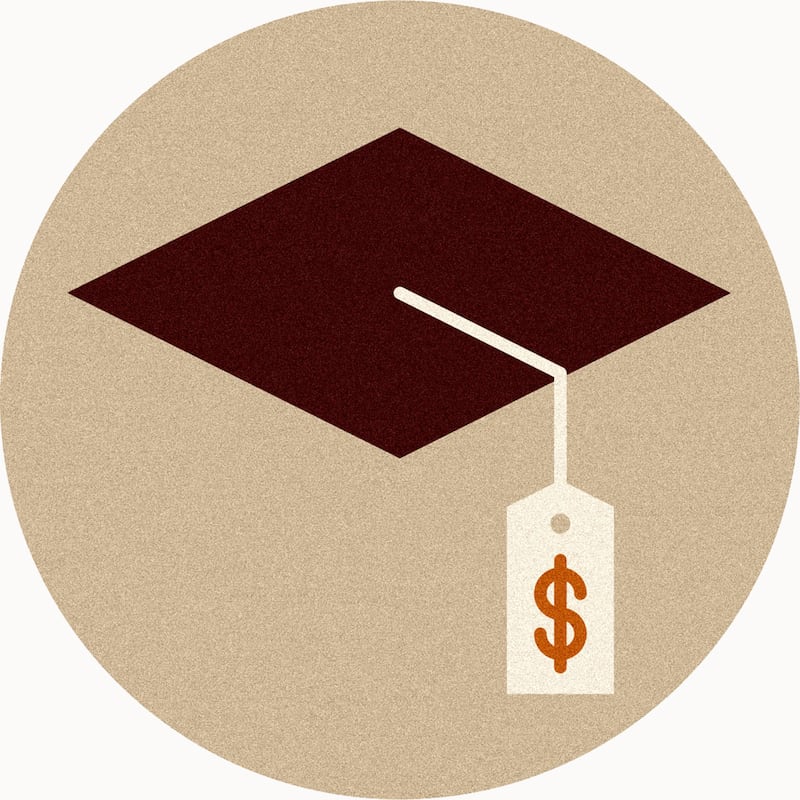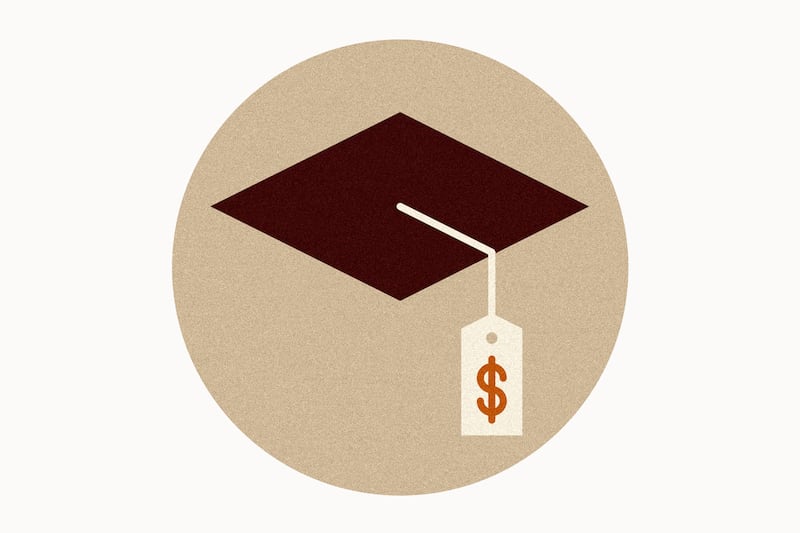Editor’s note: This is part of a Deseret Magazine series examining the question: What happened to the promise of college?
Few decisions young Americans make will have as large an impact on their financial lives as whether — and where — to go to college. Yet far too often, those decisions are made with less rigor than we’d use for similarly impactful transactions, like buying a car or taking out a mortgage. We assume college is “worth it” simply because it always has been. But the modern higher education landscape is far more complex than the familiar slogans would have us believe.
Over the past two decades, political leaders on both sides of the aisle have championed college as the surest path to the American dream. One of the most prominent voices in this movement was President Barack Obama, who made increasing college attainment a centerpiece of his domestic agenda. In his 2009 address to Congress, Obama declared that “every American will need to get more than a high school diploma,” and set a national goal for the United States to once again lead the world in college completion by 2020.
This enthusiasm wasn’t unique to Obama. Policymakers from both parties embraced the idea that more college attendance meant more opportunity, and in turn, a stronger economy. The narrative was compelling — and partially true. But the push to increase enrollment came with too little attention to where students were going, what they were studying, how much they were borrowing and whether they were completing their degrees. In hindsight, it’s clear that the college-for-all movement, while well intentioned, downplayed the complexity of the higher education marketplace and the real risks involved.
A 2024 report by economist (and American Enterprise Institute colleague) Preston Cooper examined more than 50,000 postsecondary programs and found that while the median bachelor’s degree delivers a return on investment of about $160,000, nearly 1 in 4, four-year programs actually result in a negative return. In other words, some degrees are worse than worthless; they leave students worse off than when they started. Yet within the same system, many degrees — especially in engineering, computer science and health-related fields — can deliver returns that exceed $500,000 or even $1 million over a lifetime.
That means that the answer to the oft asked question of “is college still worth it?” is the unsatisfying “sometimes.” Where a student goes to school, what they study, how much they pay and whether they finish all play a decisive role in determining whether their enrollment will pay off.
Failed oversight in lending
Despite the federal and state governments playing a large role in higher education policy, this is an area where oversight has largely failed consumers. In addition to encouraging college attendance without also advising prudence in deciding where to go, what to study and how much to spend, we’ve maintained policies that allow students to borrow through federal lending programs with almost no scrutiny about whether or not the loan will likely be affordable for them to repay.
Under the recently passed budget reconciliation bill, we’ve taken a small step forward on that front. Students will no longer be able to take out federal student loan programs to attend programs where graduates consistently earn less than the median earnings of high school graduates. This is, by most accounts, a low bar. But at the same time, this new accountability measure marks a dramatic departure from the federal government’s previously agnostic stance on whether higher education should pay dividends for learners. It signals a growing consensus: If taxpayers are going to underwrite the cost of higher education, the programs that benefit should produce real economic value for students and society.

In many ways, this policy change is long overdue. For decades, we’ve allowed institutions to enroll students, charge high tuition and leave them with debt they can’t afford to repay — all financed by American taxpayers through federal student loans. Now, programs with demonstrably poor outcomes will lose access to that pipeline, which could force institutions with low-performing programs to either improve or exit the marketplace. It’s a significant shift — and one that could reshape the postsecondary landscape for the better.
But policy can only go so far. Even with new safeguards in place, students will continue to face a wide range of options with varying outcomes. The most effective guardrail is still personal responsibility: making enrollment decisions based on realistic expectations about earnings and debt, and not on prestige or perceived cultural value.
An important step to restore the value of higher education is to normalize the idea that different people will benefit from different paths.
We need to change the rhetoric around college to reflect the fact that college isn’t a commodity; not all college degrees are created equal. The average outcomes that policymakers and pundits often cite (and celebrate) obscure enormous variation across institutions and fields of study. For example, students who major in education, psychology or the arts — while pursuing noble and important work — often enter low-paying labor markets. If those students attend expensive private institutions and borrow heavily, they may face years of financial hardship as they repay their debt.
On the other end of the spectrum, many associate degrees and technical certificates offer excellent returns, particularly in fields like nursing, information technology and skilled trades. Cooper’s research shows that some sub-baccalaureate programs deliver lifetime returns that rival or exceed those of traditional bachelor’s degrees. Yet these pathways are still underutilized, in part because students often aren’t presented with them as viable options.
That’s a failure of both culture and policy. For decades, we’ve perpetuated the myth that a four-year degree is the only respectable path to success. In doing so, we’ve funneled too many students into programs that aren’t a good fit — either academically or financially — while simultaneously stigmatizing alternatives that may offer better payoffs with lower risk. One of the most important steps we can take to restore the value of higher education is to normalize the idea that different people will benefit from different paths — and that there’s nothing inferior about choosing the one that makes the most financial sense.
Prestige over prudence
High school students are bombarded with rankings, branding and pressure to attend the most prestigious school they can get into — regardless of cost. Parents and counselors, often with good intentions, reinforce the idea that success depends on a four-year degree. We need to challenge this thinking and recognize that the best college is the one that offers a strong return, not just a fancy name.
Transparency can help. When students have access to clear information about the likely outcomes of different programs, they’re better equipped to make informed decisions. Tools like the College Scorecard — a federal website that provides earnings outcome data for every college and university in the nation — and return-on-investment studies like the one published by Cooper give students the opportunity to shop smart — to compare not just amenities and campus life, but long-term financial implications. But that information only matters if people use it.
That’s where personal responsibility comes in. The most effective way to avoid the burden of unmanageable debt is to borrow wisely. That means keeping debt in proportion to expected income, being realistic about repayment timelines and choosing programs that deliver strong employment outcomes. Federal student loans are a powerful tool for increasing access, but they’ve also enabled students to make decisions they might not make if they were paying with their own money upfront.
At the same time, it’s important to recognize that not every student who struggles to repay their loans made an irresponsible decision. Life after college is uncertain. Careers can stall, economic downturns happen, and personal challenges can derail even the most well-laid plans. That’s why income-driven repayment (IDR) plans exist — and why they play such a vital role in making the federal student loan system safer for borrowers.
Under these plans, monthly payments are tied to a borrower’s income and family size, not the size of their debt. Some borrowers will be excused from making payments altogether. For low-income borrowers or those in volatile job markets, IDR serves as a critical safety net.
Unfortunately, the complexity of IDR has historically limited its impact. Many borrowers don’t understand the options available to them, or they struggle to stay enrolled due to burdensome paperwork. That’s why recent policy reforms — including those passed through the recent budget reconciliation bill — aim to make these protections more automatic and accessible.
The legislation made several notable changes. First, it codified a new IDR plan for future borrowers. Low-income borrowers who are truly struggling — those earning less than roughly $30,000 annually — will effectively pay nothing on their loans and see no accumulation of interest. At the same time, borrowers with higher incomes and stronger post-college earnings will face more consistent repayment obligations, preventing high-earning graduates from using IDR as an escape hatch.
This rebalancing is an important course correction. The old IDR system had begun to function, in some cases, as a form of backdoor loan forgiveness even for borrowers who were financially well-off. Under the new rules, student loans will better reflect the foundational principle of shared responsibility: When a borrower’s investment in college pays off, they’ll be expected to pay back what they owe. But when it doesn’t, the system will offer support.
The world has changed, and higher education needs to change with it. We can no longer afford to treat college as a cultural assumption or a rite of passage. It must be evaluated like any other high-cost, high-reward investment. The tools to do that exist. The data are out there. Both individual students and their families need to make use of the data available to make prudent decisions for their financial futures. And we need lawmakers to keep taking steps to ensure that low-performing programs don’t stay on the federal dole with an implicit stamp of approval.
College can still be worth it — but only if we demand more from the institutions we fund, equip students with better data and stronger financial literacy, and hold low-value programs accountable. The era of blind-faith borrowing is over. What comes next must be smarter, clearer and more transparent — for everyone involved.
This story appears in the September 2025 issue of DeseretMagazine. Learn more about how to subscribe.


